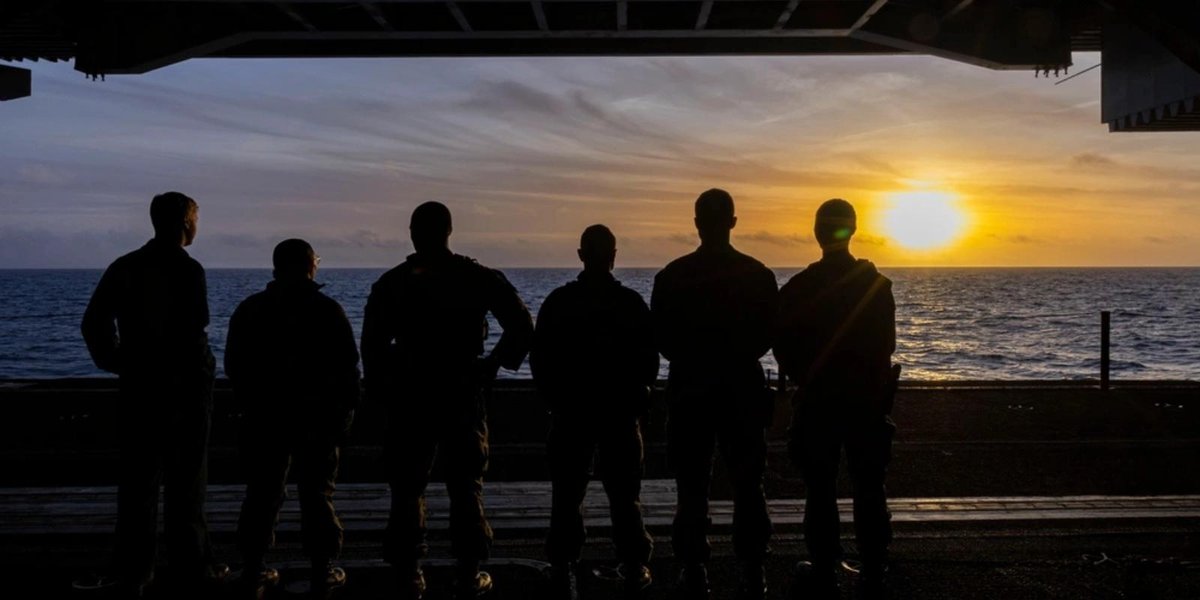MILITARY DEPLOYMENT: WHAT TO EXPECT ON ELECTION DAY

Deploying the military to maintain order on Election Day has been an idea floating around in 2024. However, what would that look like for service members? Depending on how you serve the United States will decide how your deployment looks. Here’s a breakdown of the possible deployment cycle, in the event such steps become necessary:
Deployment Cycle for Active Duty
Active duty military members have four parts of their deployment cycle. If the military is deployed on US soil for Election Day, here’s what service members can expect to experience:
Pre-Deployment Phase
When not deployed, service members follow a regular training and medical evaluation routine to stay mission-ready.
For families, this feels like "normal life," with their loved one at home, going to work each day.
Near the end of the pre-deployment phase, your unit receives a mobilization alert, marking the start of intense preparations for deployment.
This can include briefings, extra training, medical and dental evaluations, and sometimes counseling to ensure readiness.
The pre-deployment phase officially ends when the unit leaves the base for their operational destination.
With tensions high, theoretically, this phase should have already taken place and is currently ongoing as of this writing, leading up to November 5th.
Deployment Phase
The deployment phase begins when service members and units leave their home base for the designated mission location.
For Election Day, this might mean deploying near polling stations and/or in cities experiencing extreme levels of unrest.
For service members and their families, this phase can be stressful as there is a separation and disruption to their lives.
While deployed, service members focus on their military duties to support the mission, whether overseas or within the United States. Their daily lives revolve around executing their assignments.
As the deployment phase winds down, units begin preparing for the journey back home.
This period is filled with anticipation as final tasks are completed and preparations for a return to normalcy take shape.
In terms of deploying for Election Day, this would likely mean a restoration of order stateside following the conclusion of the democratic process.
Post-Deployment Phase
Once service members are back to their home base, the process of re-entering their normal life begins.
There are several resources provided to warfighters during the post-deployment phase ranging from healthcare to briefings to training and more.
What this looks like after a deployment because of Election Day is a bit uncertain as it would be somewhat unprecedented.
Nevertheless, these resources remain available and part of the process to get troops back to their normal jobs and life on base.
Reintegration Phase
Last but not least is reintegrating service members into their normal lives to live again with their families.
This phase can be particularly complicated if there is a deployment on Election Day, as politics are complex and reentering one’s community following their service present challenges.
The final phase may include follow-up briefings, training, counseling, and medical evaluations.
Again, families can experience stress as they readjust, but many support services from the military and community help ease this transition.
Deployment Cycles for the Reserves and National Guard
If you are serving in the Reserves or the National Guard, the deployment cycle is similar, yet different than that of active duty; however, only for pre-deployment. The other stages are the same:
Pre-Deployment Phase
While the pre-deployment phase is similar to what active duty service members experience, the main difference is that you can expect to receive your mobilization alert, and the phase ends once you physically leave your home base for the area you’ll be serving.
Once you reach the deployment, post-deployment, and reintegration phases, you can expect the same experience as listed above for active duty members.
Individual Augmentee (IA) Deployment
Individual augmentee deployment is when service members deploy either on their own or with a smaller group in support of a different unit than they normal service with either by volunteering or being selected.
These deployments usually have shorter notification periods, limited pre-deployment details, and can be in areas with communication challenges.
How any of these potential deployments operate on Election Day remains a bit unknown and considering the conditions that may be necessary to facilitate such an extreme measure by the government, lets hope that they continue to remain unfamiliar.
Suggested reads:What Does It Mean to Be an Honorary Marine? Exploring the Process
Navy Recruitment Goals For 2024 Are Showing Positive Signs
United States Navy Reserve Officer Sentenced for Visas Scheme
Buddy Blouin
Buddy Blouin is a Contributing Writer at VeteranLife.com
Buddy Blouin is a Contributing Writer at VeteranLife.com
SHARE:



